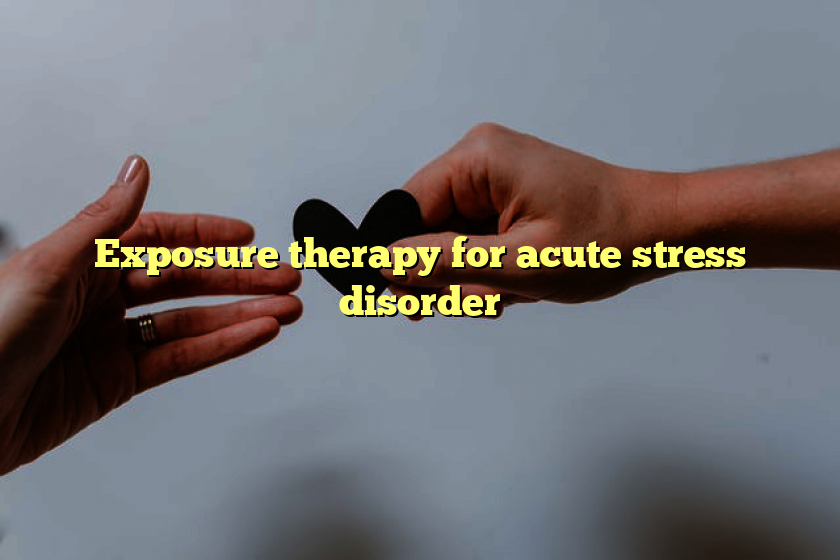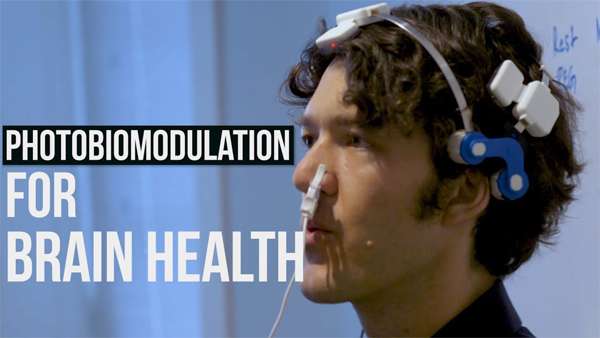Nine Ways Therapy Dogs Can Help Kids with Autism
Life for children with an Autism Spectrum Disorder (ASD) or other developmental disabilities can be challenging. ASD causes developmental impairment that often leads to other issues like rigid behavior, narrow range of interests, social withdrawal, and anxiety. Children with ASD often have short attention spans and difficulties with social communication.
There are various therapies and behavioral management programs available to offer support to children living with this neurological and developmental disorder. While some therapists focus on developing communication skills of ASD patients, others stress reducing the problematic behaviors associated with autism. In addition to this, there is something else that is helping people with autism – spending time with therapy dogs.
Therapy Dogs for the Treatment of Autism Spectrum Disorder
According to Francesca Cirulli, a senior researcher at the National Institute of Health, Italy, many studies show that dogs work as social catalysts by encouraging people to bond with each other. A few studies have found this notion true in terms of kids with autism.
A review published in the Journal of Alternative and Complementary Medicine has shown evidence that therapy dogs can play a crucial role in helping autistic patients develop communication and social skills. The team reviewed six published studies that covered the effects of dogs on children with autism. Out of the six studies, four were on therapy dogs that assisted therapists during the treatment sessions. The was found that autistic children were more vocal and engaged in the sessions when dogs were around.
Another study that reviewed the behavior of 22 autistic children revealed that children were more engaged and talkative during sessions where dogs were present. A separate study showed that children who had therapy dogs during the session were less aggressive and more friendly.
You see, therapy dogs can assist autistic children by making them feel socially and emotionally secure. These trained furry friends can help in improving the emotional wellbeing of the child and further aid in developing their sensory integration.
Advantages of Therapy Dogs in Treating ASD
Social Engagement
Kids with autism experience some difficulty in socializing with others. A therapy dog can help an autistic child to break the ice and motivate them to mingle with others. When needed, therapy dogs can divert the attention of autistic kids away from distractions and help focus on a task.
Calm During Meltdowns
Therapy dogs have the ability to sense and feel the emotions of people they are attending to. A therapy dog can sometimes reduce the severity or totally circumvent the onset of a meltdown during a visit.
Cognitive and Emotional Growth
Autistic kids sometimes lack cognitive skills. Their rigid behavior often makes it difficult for them to form an emotional connection with others. Since therapy dogs promote positive feelings of care, love, and empathy in kids with autism. Therapy dogs love to be hugged, touched, and cuddled by children which further instills the feeling of care in autistic kids.
Sensory Support
Children with autism need sensory stimulation through regular games and activities. Therapy dogs can be trained to assist autistic children throughout the process by means of various games and activities like, tug of war, hide and seek, and massage.
Reassurance During Anxiety
A therapy dog can make a perfect companion to battle a sudden bout of anxiety and restlessness during a visit. Therapy dogs are known for offering relief from stress. The presence of therapy dogs offers a sense of security for autistic kids. .
Improved Vocal Skills
Autistic kids have impaired communication skills. It has been noted that such kids speak more frequently when a therapy dog is around. A therapy dog can bring significant change in speech challenged or nonverbal children by promoting their speech.
Companionship
Autistic kids have difficulty in making eye contact. This developmental disorder also prevents them from socializing and bonding with others. However, therapy dogs have the ability to quickly bond with children. This helps the child experience friendship and cope up with loneliness. Unlike human friends, therapy dogs are non-judgemental, which further helps an autistic child become comfortable around others.
Autism is as stressful for families as it is for the child suffering from it. However, therapy dogs don’t just help autism kids battle the disorder, but they also help parents and families to find peace and strength. Studies have shown that the support from therapy dogs can help parents of an autistic child feel relaxed and experience less stress.
With 17,000 active members, we at ATD are committed to helping special needs kids, adults, and elderly people find love, care, and support. Our network of well-trained therapy dogs and their caretakers are always willing to make others smile and feel loved and wanted.
For more information, call us at 307-432-0272 or contact us today.
Today’s “Got Questions?” response is by dog trainer Janet Cole, dog handler Betty Miller and developmental pediatrician Rolanda Maxim Gott. Ms. Cole is the founder of CHAMP Assistance Dogs, in St. Louis, Missouri. Ms. Miller is nurse coordinator for the dog therapy clinic at the Knights of Columbus Developmental Center of SSM Cardinal Glennon Children’s Hospital and Saint Louis University School of Medicine. And Dr. Maxim is the developmental center’s medical director. The center, hospital and medical school are part of the Autism Speaks Autism Treatment Network.

“We are looking into getting either a therapy dog or a service dog for our son who has autism. My respite-care provider believes he would benefit more from a therapy dog then a service dog. Can you advise? Any help or suggestions are appreciated.”
Thank you for your excellent question. Before we discuss which kind of dog might be best for you child, please consider the following questions if you haven’t already:
- Does your child like dogs?
- Might your child or anyone else in the household have allergies that might be aggravated by a dog?
- Is your family prepared and ready to take on the long-term commitment and expense of caring for a dog in sickness and in health?
- Are you comfortable handling a dog while caring for your child in public? Even with a highly trained service dog, many parents have told us they were surprised how difficult this could be. Remember, the dog is looking to you (the adult) for direction and commands. At the same time, your child may need your full attention.
A service dog training agency – such as those listed on the Assistance Dogs International website – can help you sort through these questions.
Choosing a service dog, companion dog or therapy dog for your autistic child
You are correct to recognize a difference between a service dog and a therapy dog. We’d add a third category – a companion dog that’s well-behaved and well-trained. In fact, that’s what we usually recommend when a family comes to us for advice on choosing a dog for a child who has autism.
Here are some distinctions to consider when deciding which type of dog is right for a child – or adult – who has autism:
Companion dogs

As mentioned, a well-trained family pet can be a wonderful calming influence for someone who has autism. An affectionate dog provides unconditional love and friendship on a daily basis. Walking the dog provides both exercise and a “social magnet” to ease conversation with other children. Learning to care for the dog teaches responsibility and practical skills. And pets provide parents with opportunities to teach and model caring behaviors and consideration of a friend’s needs – both important social skills.
If you’re considering purchasing or adopting a dog, we suggest golden retrievers, labs and labradoodles (lab-poodle mixes) because these breeds tend to have a calm temperament and high intelligence.
When it comes to adopting a rescue dog, we have one caveat. Many rescue dogs have unknown histories. That makes it difficult to predict how they will react when they feel frightened or threatened. Would the dog bite your child if he grabbed it roughly? Is it prone to chase cats? Attack other dogs? Some rescue dogs have been abused and so become fearful around certain people such as men.
Editor’s note: For a listing of local and national agencies and resources, also see the Autism Speaks Assistance Dog Resource page.
Service dogs

Many service dogs receive extensive training and official certification to help perform functions that present a challenge for a person with a disability. However, the Americans with Disabilities Act (ADA) states that people with disabilities have the right to train the dog themselves and are not required to use a professional service dog training program. ADA also mandates that people can bring their service dogs in all public areas – including restaurants and stores. Service dogs typically wear a “cape,” or harness, that identifies them and lets bystanders know they are working and should not be disturbed.
Each service dog is trained according to the needs of the person it will assist. For instance, it may help someone with a mobility problem, visual or hearing impairment, epilepsy (alerting to seizures), diabetes (alerting to high or low blood sugar), an anxiety disorder or a developmental disorder such as autism.
An autism service dog, for example, can accompany a child to decrease anxiety during medical or dental visits, school activities, shopping and travel. Some autism service dogs are trained to recognize and gently interrupt self-harming behaviors or help de-escalate an emotional meltdown. For instance, it might respond to signs of anxiety or agitation with a calming action such as leaning against the child (or adult) or gently laying across his or her lap.
Parents have asked us about getting a service dog to safeguard their child from wandering. Generally, we do not recommend this. Tethering a dog to a child can be extremely dangerous. Like any animal, a service dog can panic under stress, resulting in tragedy for both the child and dog. While some agencies claim they can train dogs to stop children from leaving a home or yard, dogs are not appropriate babysitters. They can get fatigued and inattentive.
Finally, we want to emphasize that while many well-meaning people try to train dogs to perform service-dog duties, an improperly trained service dog can present a real hazard. That’s why we recommend working with an accredited dog agency. (See resources above.)
Therapy dogs
As their name suggests, therapy dogs are trained to provide affection and comfort in therapeutic situations. Typically, they work in hospitals, nursing homes and other healthcare and mental health facilities. They can assist with physical or occupational therapy, or simply help calm a patient undergoing a stressful medical procedure.
Outside of medical and institutional settings, therapy dogs have become popular in the autism community for their calming influence and ability to promote social interaction.
Many but not all therapy dogs have special training. (Many simply have an exceptionally calm, affectionate and tolerant nature.) When choosing a therapy dog, we recommend using an accredited agency such as one of those listed on the Assistance Dogs International website. In contacting a local agency, ask about their experience and training working with children or adults who have autism.
When therapy dogs work in a professional setting, they often wear an identifying cape. Some private owners likewise use an identifying cape or bandana. However, therapy dogs don’t have federally mandated access to public places.
Bottom line: Whether you get a companion dog, service dog or therapy dog, selecting the right animal means finding a highly individual “match” – with the child’s needs as well as the family. A local assistance dog agency may be able to help with this process. However, it’s a process that takes patience – with home visits and special training and waiting periods that can take up to 2 years from start to finish.
We hope this information on your canine options – and what each can offer a child with autism – will help guide your choice. Your goal is a very special connection between your child and the dog. When this happens, it is a magical thing!




